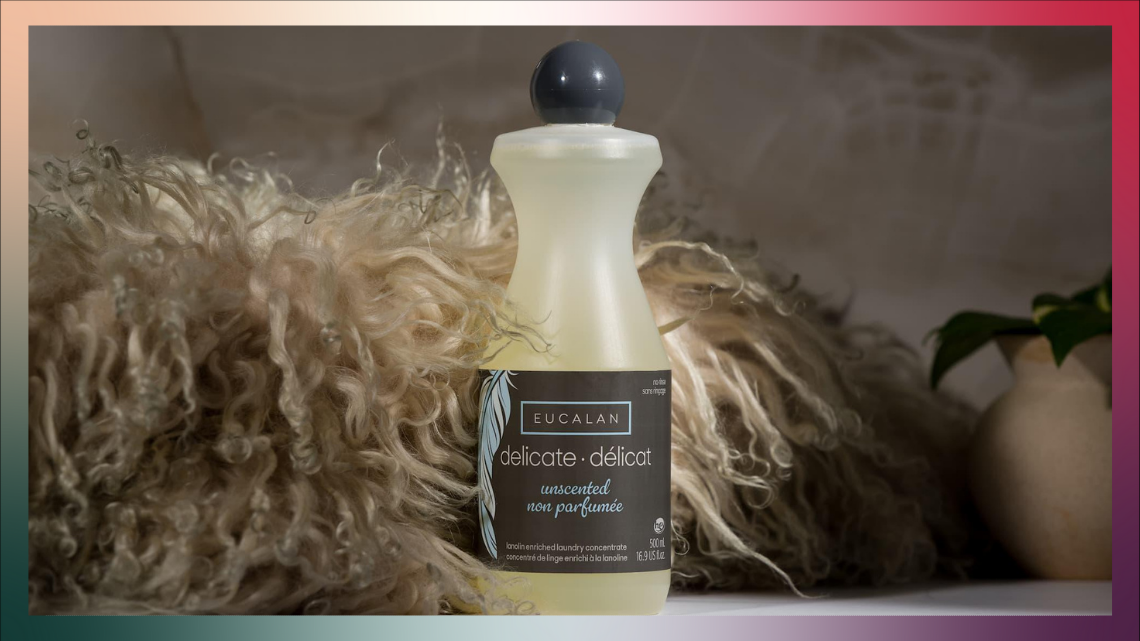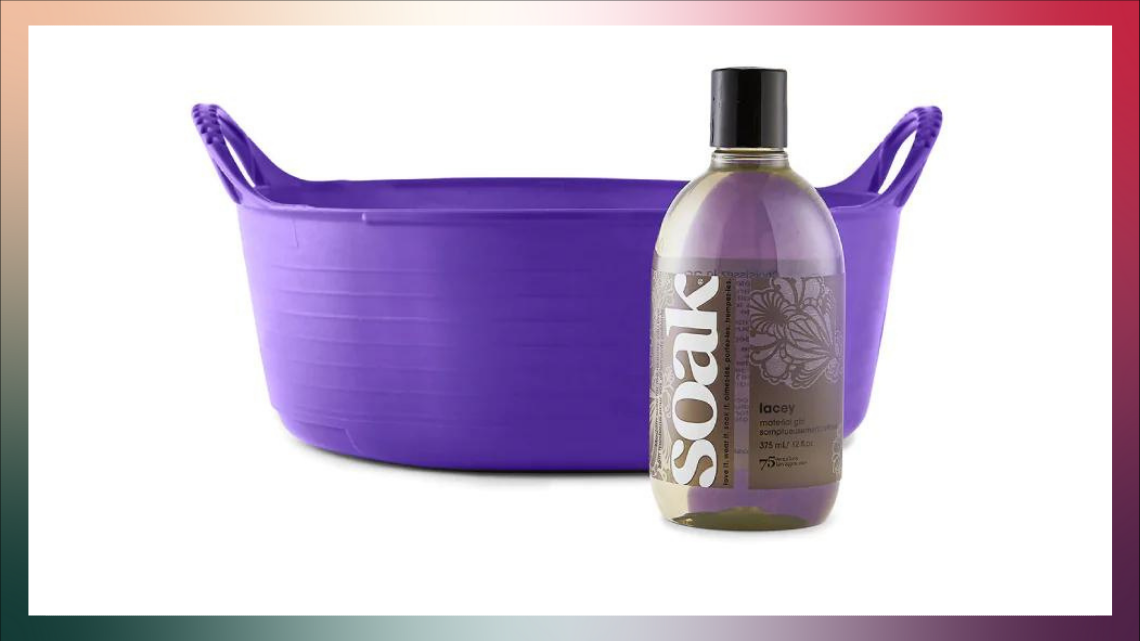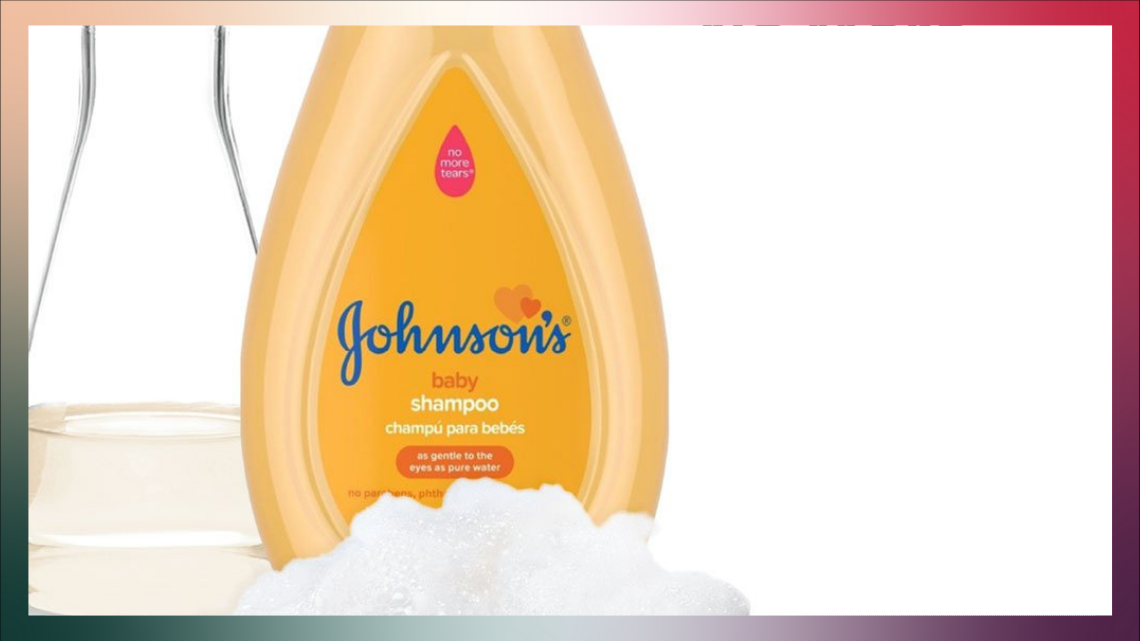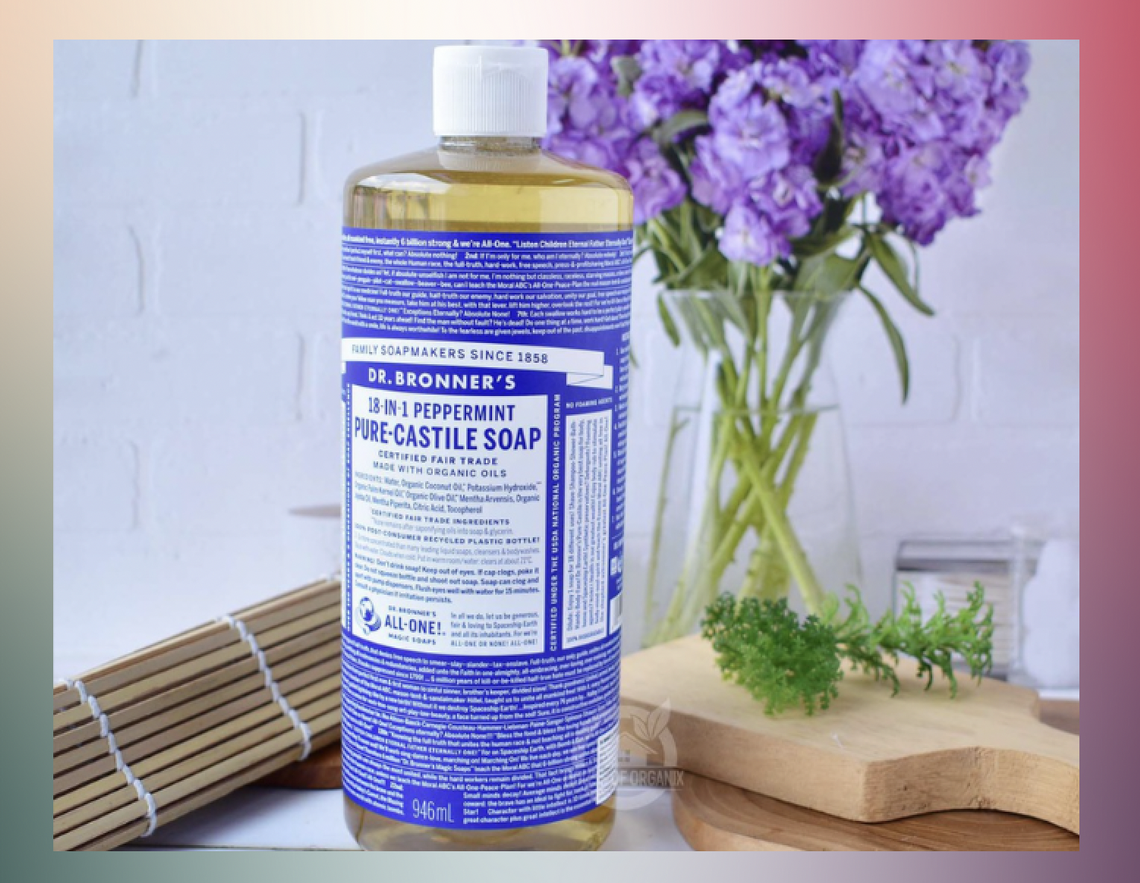Laundry Care: 5 Cleansers for Delicate and Hard-to-Wash Items
Items featured are independently selected by editors. Products purchased through our links may earn us a commission.
I’m a bit of a fancy gal. Lace? Yes. Sequins? Yes. Cashmere? Yes. Silk? Very yes. You get the idea. However, all clothing, no matter what, will eventually need washing. The question is: what can you use on those hard to wash items without destroying them? The answer is crucial for vintage, heirloom, custom, or - irreplaceable pieces.
While dry cleaning is a familiar option, it can be rough in its own ways, not to mention environmentally unsound. Dry cleaning uses chemical solvents - as opposed to water - to rid garments of dirt, grime, oils. However, we’re not here to talk about dry cleaning. Let’s have a conversation about washing by hand.
The most important thing to remember for delicate items is they can’t take a lot of rough handling. When I say “rough,” I mean wringing, twisting, aggressive scrubbing, or even using very hot water. While many of our daily wear clothes can hold up to at least some harsh treatment, it doesn’t take much to ruin a silk gown or sequin sheath permanently.
When it’s time to wash, use an ultra-clean sink, tub or basin, fill it with slightly cool or lukewarm water, and gently agitate your delicate wash of choice in the water. Hot water can cause garments to shrink, leak excessive dyes, or even “set in” stains that might have otherwise been removable. Of course, as with regular washing, you’ll want to separate your darks from your lights. You’ll also want to avoid putting items with sequins or beads in the same wash with fabrics like tulle or chiffon as the former can catch on the latter.
Once the water is prepared, gently add your clothes. Swish them around to make sure the fabric is entirely saturated. I like to do a bit of light squeezing to ensure the detergent has fully penetrated all the fibers. If there are slight stains, a soft bristle toothbrush and a bit of extra detergent on that area can help lift them. However, always remember to be gentle. Gently swish your clothes around, then leave them to soak. Usually 15 to 30 minutes is enough.
After the right amount of time has passed, drain and gently squeeze the excess water from the fabric. If you’re using a no-rinse detergent, you can move on to the next step. If you’re not, you’ll want to complete several rinse cycles - always with cool or tepid water! - until there are no more suds.
Following this, as soon as you’re certain the garment is rinsed clean, gently squeeze the remaining water away then roll it within a towel - not too tightly! - to remove even more. At this stage, I’ll lightly press my body weight onto the towel roll to help release more water.
Finally, it’s time to dry. This phase has two options. The first is to simply set down a fresh towel and let your garment dry flat, flipping ever so often and replacing the damp towel with a fresh one as it dries. This is my preferred method for garments that can easily stretch out of shape, such as sweaters, or clothes that could tear under their own weight, like heavily beaded pieces.
A second method is to use a drying rack. You’ll want to place lighter clothes above the darker ones so no dye drips onto the lighter pieces as everything dries. Remember to keep your drying rack away from heaters!
Though this may seem like a lot of steps, the truth is it doesn’t take long at all. Your laundry can soak while drinking a cup of coffee or loading the dishwasher, for example.
Yet all these steps mean nothing if you don’t use the right detergent! The usual laundry soap you use for everyday items would be too harsh here, not to mention harder to rinse as the formulas are made for machine wash and rinse cycles. Lingering soap residue destroys your clothes over time, which is another reason it’s important to use an appropriate wash.
As a former lingerie writer, I have a lot of experience washing dedicates. Here are my five top choices, including one you might not expect!

Eucalan - Eucalan is one of two “no rinse” washes on this list, which is my preference, especially if you’re pressed for time or worried about thoroughly rinsing garments. Eucalan is excellent for animal proteins like wool and silkand also gentle enough for baby clothes. Though Unscented is an option, I recommend the Jasmine, if you can tolerate fragrances.

Soak - The second “no rinse” wash, Soak, is recommended by the New York Times in addition to yours truly. With branding that’s a little more playful than the previous name on this list, Soak can be used for various garments, including swimwear and knit or crocheted items. I recommend their “laundry kits” which come with a bottle of detergent and a color coordinated basin. Fig is my favorite scent, though they also offer the essential unscented.

Baby Shampoo - Yes, you read that right! Delicate enough for a baby’s skin, baby shampoo is gentle on your clothes. Baby shampoo also has the advantage of being easily accessible. If you’re near a store, you’re probably near baby shampoo. Because this is a sudsy shampoo, as opposed to a delicate wash, be careful how much you add to the water. More suds doesn’t mean better, especially when you have to rinse them all away.

Castile Soap - Castile soap is a special case because while I don’t recommend using it interchangeably with a laundry wash, it is good for localized spot treatments. After spot treating, wash your item as normal, again making sure to rinse away all the soap. An important tip: check to see if the Castile Soap you’re using needs to be diluted! It can be very strong on its own and you don’t want to accidentally damage your clothing.
Vodka - No, it’s not for drinking! Some items - like corsets - aren’t easy to launder with either dry cleaning or wet cleaning yet still need a bit of deodorizing. That’s where vodka shines. Buy cheap vodka (not the flavored kind), don’t dilute with water, then use a spray bottle to spritz your clothes. As the vodka evaporates, so will odors. Spot test this method first on an area of the garment that won’t be seen, and keep in mind that while vodka is good for managing odors, that’s not the same as a deep clean. A soft brush, perhaps with a little cornstarch, can help lift small stains or dirt.
A lot of historical laundry care secrets have been lost as washing machines and laundry detergents have become more advanced. In spite of that, there will always be items where hand-washing is best. When it comes to your clothing, a little bit of care goes a long way.
